Administrator
Logistics Leader Wins Work In Excess of £2 Million
A leading provider of integrated logistics solutions has announced that its UK operation has secured work in excess of £2 million since the beginning of the year.
 NorSea UK Country Manager Karen RussellNorSea UK is part of the NorSea Group and operates from premises in Aberdeen and Peterhead, providing supply bases and integrated logistics solutions to the energy and other industries.
NorSea UK Country Manager Karen RussellNorSea UK is part of the NorSea Group and operates from premises in Aberdeen and Peterhead, providing supply bases and integrated logistics solutions to the energy and other industries.
Since the start of 2020, the UK team has seen a steady increase in demand for products and services, including an upturn in vessel numbers and types at its growing Peterhead facility. NorSea has also reported that, following investment to the tune of £500,000, office accommodation at its Aberdeen base is at 90% capacity with warehouse and yard space also in high demand.
NorSea UK Country Manager Karen Russell commented: “As well as continuing to benefit from our refurbished base in Aberdeen, we are experiencing an ongoing increase in the volume of maritime traffic at Smith Quay and Merchants Quay in Peterhead. The additional quayside, marshalling and berthing space which has been added there in the last 18 months has been central to that increase.
“By increasing our customer base whilst simultaneously extending services to current customers, we have been able to grow our UK business in a steady way which gives us confidence and optimism as we look to the future.”
To find out more, call +44 (0) 1224 451000 or visit https://norseagroup.com/bases/norsea-uk
NorSea United Kingdom operates from HQ, warehouse and yard premises in Aberdeen’s Altens Industrial Estate from where the privately-owned company provides supply bases and integrated logistics solutions to the energy and other industries. Part of the 55-year-old NorSea Group, it operates recently-expanded bases at Peterhead’s Smith Quay and Merchants Quay and aims to deliver high-tech, innovative and complete supply chain solutions which are tailored to customer needs. To find out more, call +44 (0) 1224 451000 or visit https://norseagroup.com/bases/norsea-uk
COVID-19 to reduce global lead production by 5.2% in 2020, says GlobalData
Global lead production is expected to decline by 5.2% to 4.5 million tonnes (Mt) in 2020. The outbreak of the COVID-19 pandemic in late December 2019 significantly impacted the mining industry in the first half of 2020, and continues to do so, says GlobalData, a leading data and analytics company.
Overall global lead mine production declined by 3.4% in Q1 2020, compared to the same period in 2019. This was primarily due to the decline in production in China, India and Kazakhstan due to COVID-19 restrictions.
Vinneth Bajaj, Senior Mining Analyst at GlobalData, comments: “In China, production is forecast to decline by 3.5%, to reach 1,985 thousand tonnes (kt) in 2020. The country’s lead mine production declined in the first quarter of 2020, primarily due to restrictive measures taken by the government to contain the virus.
“Several mines and plants had to temporarily cease production activities due to the shortage of workers who could not return to mine sites, owing to the prolonged Lunar New Year holidays, followed by transportation issues due to the lockdown. Although most of the lead producers gradually restarted mine operations, lower demand from the automotive sector is expected to constrain mine production in 2020.”
In Australia, production is forecasted to fall by 4.2%, even though mining in the country has not been as severely impacted as in other countries. Production from the rest of world is anticipated to decline from 2.2Mt in 2019 to 2Mt in 2020 – a drop of 7.1%. Significant declines will be in Peru (8.4%), the US (6.1%) and India (14.1%).
Bajaj continues: “Looking ahead, lead production over the forecast period (2021–2024) is expected to grow at a compound annual growth rate (CAGR) of 4.2%, to reach 5.2Mt in 2024. Peru, Australia and China will be the key contributors to this growth. Combined production in these countries is expected to recover from a forecasted 2.8Mt in 2021 to 3.3Mt in 2024.”
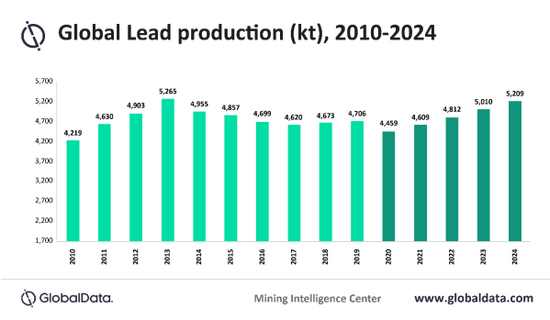
Bajaj adds: “Key projects expected to commence operations during the forecast period include the Abra in Western Australia and the Prairie Creek project. The Abra in Western Australia is currently undergoing construction. The project’s debt financing has been slowed due to the outbreak of COVID-19, however, the company is targeting its initial production in 2021, with an annual lead capacity of 95kt. The Prairie Creek project is currently awaiting regulatory approvals and permissions. With a total US$279mn pre-production capital cost, the project is expected to commence operations in 2022. Once commenced, the project is expected to produce 47.6kt of lead annually.”
Quotes provided by Vinneth Bajaj, Senior Mining Analyst at GlobalData,
This press release is written using data and information sourced from proprietary databases, primary and secondary research, and in-house analysis conducted by GlobalData’s team of industry experts
About GlobalData
4,000 of the world’s largest companies, including over 70% of FTSE 100 and 60% of Fortune 100 companies, make more timely and better business decisions thanks to GlobalData’s unique data, expert analysis and innovative solutions, all in one platform. GlobalData’s mission is to help our clients decode the future to be more successful and innovative across a range of industries, including the healthcare, consumer, retail, financial, technology and professional services sectors. Q2MIN0014.
AMADA WELD TECH Announces MM-410A Handheld Resistance Weld Checker
Compact unit supports process development and production applications for a range of resistance welding technologies
AMADA WELD TECH announces the new MM-410A handheld resistance weld checker, ideal for both monitoring and troubleshooting issues in production. The compact unit supports a wide range of resistance welding technologies, including AC, DC inverter, AC inverter, transistor, and capacitive discharge. Featuring a simple and intuitive user interface and colour touch panel display, the MM-410A provides information on current, voltage, weld time, and force.
The MM-410A is ideal for use in process troubleshooting, where it can be used to correlate waveform and numeric data with process results and provide detailed weld data for process optimization and validation. If used continuously in a production environment, it reduces scrap by detecting drifts in the weld process and alerting operators before process failure. The MM-410A also reduces the frequency of destructive testing and provides an independent way of monitoring the welding power supply by detecting any drifts in welding power supply calibration.
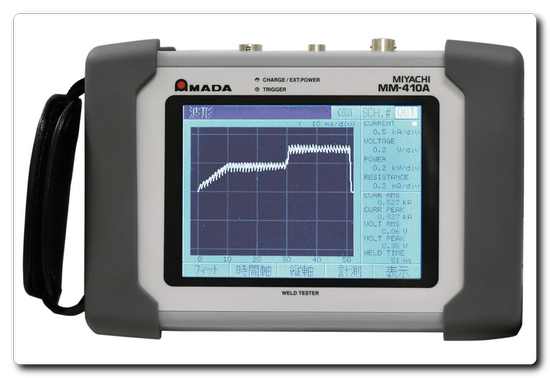
The unit provides ISO17657-compliant measurement for current (when used with available ISO-compliant toroidal coil). It offers easy set up using the 5.7-inch colour touch panel. The unique seam welding mode monitors AC current and voltage or DC voltage for up to 5 minutes. Data storage is available using an onboard flash drive. The MM-410A offers Ethernet (TCP/IP), and RS-232/485 communication. Multi-language support includes English, Spanish, Japanese, Chinese, Korean, German, and French.
Available accessories for the MM-410A handheld resistance weld tester include toroidal coils, force sensors, and current/force sensors.
About AMADA WELD TECH
AMADA WELD TECH is a leading manufacturer of equipment and systems for Laser Welding, Laser Marking, Laser Cutting, Resistance Welding, Hermetic Sealing and Hot Bar Reflow Soldering & Bonding. We customize our products around specific micro-joining applications for all our customers around the globe. AMADA WELD TECH product markets include medical devices, battery, automotive, solar industry, electronic components and aerospace. We are an ISO9001 certified company. Contact AMADA WELD TECH at This email address is being protected from spambots. You need JavaScript enabled to view it.. Find out more about the company’s products and services at www.amadaweldtech.eu.
Winners announced at the 34th Offshore Achievement Awards virtual ceremony
BP and Pale Blue Dot take home the highly anticipated ‘Energy Transition for Future Generations’ Award
The winners of the 2020 Offshore Achievement Awards were revealed in a virtual ceremony on 14 August, with joint prize-winners announced across several categories, demonstrating the high calibre of entries this year and the tough job faced by judges.
This year Jeanette Forbes, a successful industry entrepreneur and founder of the PCL Group, inspiring STEM mentor and energy sector ambassador, clinched the ‘Significant Contribution’ Award for demonstrating unparalleled support in promoting STEM to young women in education and her business mentorship efforts in the community.
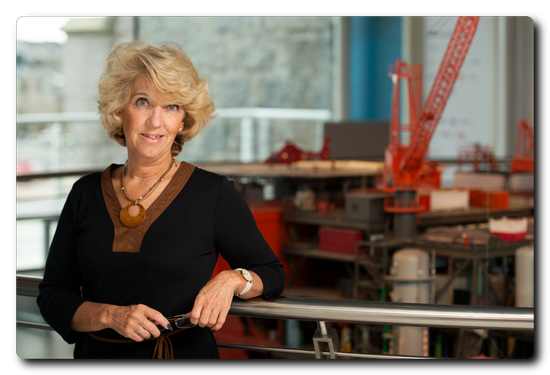 PCL Group CEO, Jeanette Forbes
PCL Group CEO, Jeanette Forbes
In the new ‘Energy Transition for Future Generations’ category, the judges received a wide range of applications, from exceptional company efforts to reduce the carbon footprint of their operations, to technology advances which will help Scotland and the UK achieve their net zero targets.
With a high number of exceptional entries, the judges decided it was only fair to name two award winners in this category. BP was recognised for its company-wide approach to decarbonisation, whilst Pale Blue Dot Energy was hailed for its pioneering Acorn hydrogen and CCS projects which aim to move the dial in the industry’s energy transition ambitions.
Other award winners included:
- Modus for ‘Innovator’
- JFD Global for ‘HSE Innovation’
- N-Sea for ‘Internationalisation’
- ITC Hydraulics for ‘Great Company – SME’
- Sparrows Group for ‘Outstanding Skills Development’
- Serica Energy for ‘Great Company – Large’
- Deep Casing Tools and Tendeka for ‘Emerging Technology’
- Gavin Morris, Bilfinger Salamis UK and Erin Ingram, TAQA for ‘Young Professional’
Commenting on the virtual celebration, Ian Phillips, chairman of SPE Aberdeen said:
“I want to commend our 2020 award winners and finalists, each of whom embody the excellence, innovation and ambition in the UK offshore industry. It is clear from the calibre of entries, and the number of joint winners this year, that there is an exceptional pool of talent present in the sector.
“From strong, passionate individuals making admirable contributions, to large organisations striving to make the industry a better place for generations to come, our finalists and winners should be justifiably proud of their success.
“The evening’s virtual celebrations honoured the brightest and best, giving a much-needed boost to the sector after weathering Covid-19, inspiring all of us to push ahead and support each other in the net zero journey.”
Donald Taylor, Europe managing director at principal sponsor, TAQA said:
“TAQA is a long-term supporter of the SPE Offshore Achievement Awards, and we’re pleased to once again support the SPE and help celebrate and showcase the ingenuity and dedication of the companies and individuals in the offshore industries.
“Despite not being able to be together physically to celebrate this year, it continues to be vital to recognise and celebrate achievements during challenging times.
“A huge thank you to everyone who took the time to support the awards this year, a spirit of collaboration has been key to making this year’s virtual event such a success. Finally, congratulations to the all the well deserving winners.”
‘Significant Contribution’ winner and PCL Group CEO, Jeanette Forbes said:
“I am absolutely delighted to be only the second woman to win the Significant Contribution Award and I look forward to hearing of other female recipients in the coming years as we look to the future of our industry. Piper Alpha changed the world for those working in O&G. We that continue to work in the industry must, and I emphasise must, change the environment and transition to leave a significant legacy built around new energy innovation”.
Bakken shale registers drop in drilling activity amid substantial decline in oil prices, says GlobalData
The Bakken Shale play, the second largest oil producing region in the US after the Permian Basin, has witnessed a considerable fall in drilling activity in 2020. The crude price crash was the main driver to the shut in of producing wells and decrease in drilling activity in this region, says GlobalData, a leading data and analytics company.
GlobalData’s latest report, Bakken Shale in the US, 2020, reveals that the gross crude and condensate production from the Bakken Shale play is expected to be 1.1 million barrels per day (mmbd) in 2020, an annual decline of 28% from 2019.
Andrew Folse, Oil & Gas Analyst at GlobalData, comments: “Operators with higher lease operating expenditures have begun shutting in wells since March 2020 while waiting for the prices to recover. Operators have slashed the amount of capital they have planned to spend in 2020, subsequently slowing down the drilling activity with over an 80% decrease in rigs from the January count of 52 to the July count of just ten.”
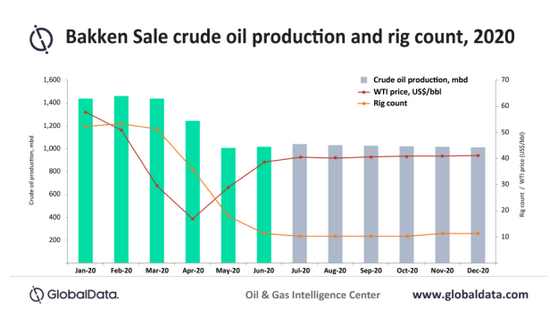
Initially, for the first quarter of 2020, crude production averaged at more than 1.4mmbd. However, with an unprecedented fall in global oil prices, operators had to recalibrate their capex outlook to maintain liquidity. This led to a drastic drop in rig count in the Bakken shale, resulting in sharp decline in crude production in the recent months.
Folse adds: “Despite the relative stability in oil price over the last two months, operators may continue to shut in production with the rise in transportation cost due to the anticipated closing of the Dakota Access Pipeline (DAPL) from August 2020. The higher cost associated with transporting oil by rail or truck could keep wells shut in for an extended period of time even with higher commodity prices.”
- Quotes provided by Andrew Folse, Oil & Gas Analyst at GlobalData
- Information based on GlobalData’s report: ‘Bakken Shale in the US, 2020’
- This press release was written using data and information sourced from proprietary databases, primary and secondary research, and in-house analysis conducted by GlobalData’s team of industry experts
About GlobalData
4,000 of the world’s largest companies, including over 70% of FTSE 100 and 60% of Fortune 100 companies, make more timely and better business decisions thanks to GlobalData’s unique data, expert analysis, and innovative solutions, all in one platform. GlobalData’s mission is to help our clients decode the future to be more successful and innovative across a range of industries, including the healthcare, consumer, retail, technology, energy, financial and professional services sectors.
OnRobot Expands Product Capabilities, Empowering Customers to Use Tools in Ever-Broadening Applications
OnRobot showcases its commitment to continuous and rapid product enhancement with the launch of a software update for the popular ‘Eyes’ robot vision system. The update is part of a broad application-focused strategy to give OnRobot customers ongoing enhancements across its product portfolio.
Traditional single-purpose industrial robots are losing ground to affordable, easy to use robots and peripherals that can be flexibly redeployed for a wide range of applications. This empowers manufacturers to gain even greater productivity increases from their automation investments. OnRobot is extending its commitment to ongoing customer empowerment with the launch of a software update for its popular, 2.5D camera-based Eyes vision system.

“Traditional approaches to industrial automation place the product at the centre, which results in costly, over-complicated solutions to simple automation problems,” says Enrico Krog Iversen, CEO at OnRobot. “OnRobot takes a more practical, application-centred approach. This means providing our customers with easy-to-use tools tailored to specific application needs. But it also means empowering customers through updates to existing products that enable deployments in new application domains.”
The new features, which enable Eyes to be deployed in quality inspection applications and on mobile setups, include one-shot detection for multiple objects, colour and blob detection and automatic landmark calibration tools designed to speed cycle time for mobile robot setups.
“OnRobot prides itself on having meaningful conversations with customers and on having the agility to respond to those conversations quickly through new releases and product updates,” says Iversen. “Our customers told us that they love Eyes' ease of use, but that they would like to see new features tailored to common quality inspection tasks. Today’s Eyes update delivers that functionality.”
New visual inspection features for reduced cycle time and fast ROI
Eyes' new inspection features enable the system to easily sort, inspect, or pick & place unstructured objects using colour and contour detection – a capability that is beyond most competing vision systems. This detection method requires no workpiece teaching and finds items based on colour and size information input by the operator. Eyes' inspection features can be used to inspect parts removed from CNC machines, for example, or to check IMM parts for excessive or inadequate material after part has been moulded. The tools also support manual inspections: operators can set up a camera and inspection program, manually place a workpiece in view and execute inspection. No robot required.
The update also provides users with one-shot detection for multiple objects, allowing the system to pick all workpieces with only one picture. This reduces complexity for users and improves cycle times. The update includes tools that allow users to request specific workpiece types and specify gripper clearance parameters.
Adding Eyes to mobile robots
A new Landmark feature has been added to Eyes' powerful toolkit, enabling easy deployment of Eyes on mobile robots and setups with carts, trays, and pallets. The Landmark feature makes it simple to program mobile robots to move from station to station using end user-defined Landmarks as their guide. Landmarks can also be used to initiate specific robot operations: for example, when Eyes detects the arrival of a mobile cart in its workspace loaded with parts for picking, it can easily switch to pick & place routines.
“More and more manufacturers are looking to deploy robot arms on mobile platforms for various factory and warehouse applications. Today’s update gives our customers the ability to put ‘Eyes’ on mobile robots and does so without sacrificing the ease of use that makes our products such a compelling proposition for manufacturers of all sizes,” says Iversen.
Regulators Release Draft Environmental Impact Statement on Stibnite Gold Project
Midas Gold Corp. has just announced that the U.S. Forest Service’s (“USFS”) had released the Draft Environmental Impact Statement (“DEIS”) on the Stibnite Gold Project (“Project”) for public comment. Individuals will have 60 days to comment on the proposed redevelopment and restoration of the former Stibnite gold, silver, antimony and tungsten mine, which is located in Valley County, Idaho. The comment period is legally required to be 45 days and the USFS has decided to grant a 15-day extension. In addition to producing gold and silver, the Stibnite Gold Project would produce the only domestically mined source of the critical mineral antimony in the United States, invest approximately $1 billion in construction, provide approximately 500 direct, family wage jobs for Idahoans as well as numerous indirect jobs in the supply, services and contracting sectors, address numerous legacy mining issues affecting the environment and reconnect migrating salmon to their native spawning grounds for the first time in more than 80 years.
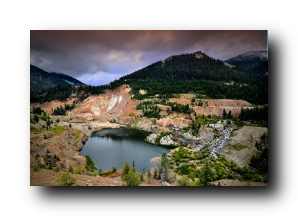 “We are one step closer to recognizing the full benefits of the Stibnite Gold Project,” said Stephen Quin, CEO of Midas Gold Corp. “Our company has worked hard for the last decade to design and permit a mining project that could redevelop and restore an abandoned brownfields site and have a positive economic impact on the local community and Idaho in general. We have carefully developed an approach to use the proceeds of mining to restore fish passage and habitat, address numerous legacy environmental impacts and improve water quality in the region. If permitted, we will bring hundreds of well-paying jobs to rural Idaho and invest hundreds of millions of dollars in the state. We encourage community members to write to regulators and let them know why they support the Stibnite Gold Project, if they want to see all of this happen.”
“We are one step closer to recognizing the full benefits of the Stibnite Gold Project,” said Stephen Quin, CEO of Midas Gold Corp. “Our company has worked hard for the last decade to design and permit a mining project that could redevelop and restore an abandoned brownfields site and have a positive economic impact on the local community and Idaho in general. We have carefully developed an approach to use the proceeds of mining to restore fish passage and habitat, address numerous legacy environmental impacts and improve water quality in the region. If permitted, we will bring hundreds of well-paying jobs to rural Idaho and invest hundreds of millions of dollars in the state. We encourage community members to write to regulators and let them know why they support the Stibnite Gold Project, if they want to see all of this happen.”
Midas Gold designed the Stibnite Gold Project to integrate responsible, modern mining with the restoration of legacy and new disturbances. At first glance of the extensive DEIS released today, readers should note that the Executive Summary prepared by the U.S. Forest Service only summarizes the impacts of proposed mining. The reader should look to the rest of the document and Appendix D to see the holistic impact analysis with the voluntary and required mitigation proposed for the various resources incorporated.
The project has strong support in Idaho, with more than 1,000 people signed up as members of the Support Stibnite Coalition, most of them Idaho residents.
“I have lived in Idaho since I was 17,” said Willie Sullivan, co-chair of the Support Stibnite Coalition. “I have memories of the old mining operations up at Stibnite, having roamed there as a child, and I have fond memories of hunting and fishing in the area as a child. If you’ve been to the site, you know it is a mess and needs to be cleaned up. I support Midas Gold’s plans to use modern mining to restore the site because I want my grandchildren to see this area cleaned up. Plus, the project will be a boon for our economy and provide jobs to many families in our region.”
Individuals who wish to view the document or comment on the Project can visit www.RestoreTheSite.com. Additional information about the Project and Midas Gold’s plans for site restoration, redevelopment of mining operations, reconnecting salmon to their spawning grounds, protecting the environment, jobs, and producing the critical mineral antimony, can be found at www.midasgoldidaho.com/news/deis-released/. Comments on the DEIS are due by October 13, 2020.
Comprehensive Review of the Stibnite Gold Project
Midas Gold has been studying the Stibnite Gold Project for the past decade. During this time, the company has worked closely with regulators to provide all of the information they needed to conduct a comprehensive review of the project. Under the National Environmental Protection Act (“NEPA”), regulators need to ensure they meet the regulatory requirements to support a robust and defensible Record of Decision.
Midas Gold has delivered more than 80 reports totaling 27,522 pages of scientific data and analysis to the 11 federal, state and local agencies reviewing the Project. These documents included baseline studies, technical reports, scientific modeling data and other supporting information. During the review process, regulators made 114 requests for additional information (“RFAI”) and 22 additional requests for clarifications (“RFC”) in order to evaluate the thoroughness of the environmental impact analysis. Midas Gold responded to all of these requests with additional data and analysis to aid regulators in their careful consideration of the proposed plan and various alternative development scenarios.
About Midas Gold and the Stibnite Gold Project
Midas Gold Corp., through its wholly owned subsidiaries, is focused on the exploration and, if warranted, site restoration and redevelopment of gold-antimony-silver deposits in the Stibnite-Yellow Pine district of central Idaho that are encompassed by the Stibnite Gold Project.
Better when connected: SmarterSlicing by Bizerba
Automated monitoring of cleaning, sharpening and maintenance cycles on the fresh food counter, centralized data and an intelligent, networked service concept: for slicing, SmarterSlicing solutions from Bizerba open up unforeseen potentials.
The retail industry is marked by ever increasing chains which also has an impact on fresh food counters. The new challenges: high throughput, many different operators, complex technical solutions and increased customer demands. SmarterSlicing provides companies more support, efficiency and transparency. This approach combines optimized operator, management and service support.
At the fresh food counter, indicators for cleaning, sharpening and maintenance inform the team about intervals due. This ensures hygiene, efficiency and impeccable results allowing the team to fully concentrate on shoppers. With unique error codes, malfunctions can be quickly eliminated.
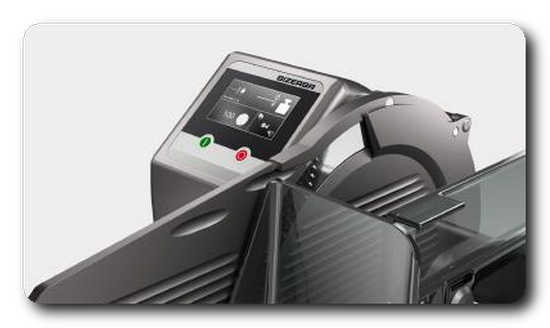
For central inventory and logging, the slicers are connected with the management. The networking also allows an overview across stores of all slicers with status and utilization. This transparency forms a solid foundation for process optimizations and need-based, planned investments.
The service support includes, for example, automated monitoring of maintenance intervals for trouble-free operation. Service visits can be much more efficient through previous data exchange. And, announced already now: with package backup, update & restore via RetailControl, SmarterSlicing will very soon allow to restore lost data remotely across all stores. Intelligent support minimizes downtimes, maximizes the service life of the slicers and allows efficient planning of maintenance tasks.
Common Bizerba slicers for various demands in the retail area are already today available with SmarterSlicing: Models VSP, GSP and VSI. The manual slicers VSP and GSP combine superior design with a high-end performance package including SmarterSlicing; available either as a vertical slicer or a gravity feed slicer. The fully automatic vertical slicer VSI is suitable for both, the retail sector and for industrial use.
Further information can be found here.
BIZERBA SE& CO.KG
Since 1866 Bizerba has made a significant contribution to the developments in the area of weighing technology and today is represented in 120 countries. The customer base includes globally operating companies in trade and industry as well as retailers, bakeries and butcheries. With 4,100 employees worldwide and with its headquarters in Balingen, Germany, Bizerba has been in the same family for five generations. Additional production facilities are located in Germany, Austria, Switzerland, Italy, France, Spain, China, Canada and USA. Bizerba also has a global network of sales and service locations.
DSM introduces glass-filled polypropylene granules optimized for easy 3D printing of structural and demanding applications
|
Royal DSM, a global science-based company in Nutrition, Health and Sustainable Living, have just announced a new glass-filled polypropylene (PP) pellet material which has been developed especially for 3D printing, enabling easy and consistent production of structural and demanding applications using fused granulate fabrication technology. Widely used for its mechanical, thermal and chemical performance, polypropylene (PP) is the second most frequently used polymer worldwide. Automotive, industrial or infrastructure manufacturers looking to adopt additive manufacturing technology for low volume or decentralized production - where the elimination of tools helps decrease cost - desire to use the same material they are familiar with from traditional manufacturing. To meet this growing need, DSM is introducing a glass-filled PP for fused granulate fabrication (FGF), suitable for additive manufacturing. Arnilene® AM6001 GF (G) - the (G) stands for granulates – stems from the same base material used in high volume production and is optimized for FGF 3D printing. By combining materials knowhow, expertise in modeling and simulation, design for additive (vs traditional manufacturing) and printing expertise, DSM secured all of the desirable mechanical, thermal and chemical performance of glass filled PP with the flexibility of a proven 3D process.
The new Arnilene® AM6001 GF (G) is ideally suited for direct printing of structural, lightweight applications for automotive, infrastructure and water management, as well as tooling. DSM Additive Manufacturing experts worked with equipment partners to validate the material on closed and open chamber build printers to optimize the material for FGF printing. The material’s low carbon footprint, due to reduced energy consumption, and its low LCA (Life Cycle Assessment), inherent to the PP’s chemistry, make it a sustainable solution. Geoff Gardner, Innovations director Additive Manufacturing at DSM, commented: “Availability of engineering-grade materials with the right property set is the next step in the additive manufacturing revolution. Developed by our experts, Arnilene® AM6001 GF (G) offers industrial customers an industry standard material with robust mechanical, thermal and chemical performance in an additive manufacturing format. By using a material they already have experience with, they can fully focus on 3D printing and its benefits for their business.” |
Marathon Oil to drive break-even prices as low as $30/bbl in Bakken and Eagle Ford by reducing well costs by 10% in H2, says GlobalData
Following the release of Marathon Oil’s Q2 results;
Andrew Folse, Oil & Gas Analyst at GlobalData, a leading data and analytics company, offers his view on the current events:
“Marathon Oil’s net loss of US$750m in Q2 2020 was well anticipated due to the drop in oil prices and the current economic crisis that impacted domestic demand. However, despite the average realized price for US crude oil and condensate falling to US$ 21.65 per barrel - representing a 63% decrease from a year prior - the company upholds an optimistic outlook and is expected to be able to improve cost efficiency by reducing well costs and maintaining well productivity.
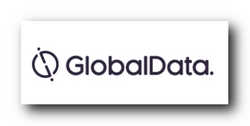 “Marathon Oil’s Bakken acreage is the company’s most promising, with high productivity and low well cost. If Marathon Oil is able to drive well costs below US$450 per lateral foot, and maintain oil productivity above 30 days initial production (IP-30) of 1,500 barrel of oil per day (bopd), the company will very likely be able to average a breakeven oil prices well below US$30/bbl in Bakken.
“Marathon Oil’s Bakken acreage is the company’s most promising, with high productivity and low well cost. If Marathon Oil is able to drive well costs below US$450 per lateral foot, and maintain oil productivity above 30 days initial production (IP-30) of 1,500 barrel of oil per day (bopd), the company will very likely be able to average a breakeven oil prices well below US$30/bbl in Bakken.
“As for its Eagle Ford acreage, if Marathon Oil is able to drive well costs below US$750 per lateral foot - while maintaining oil productivity above IP-30 of 970bopd - the company will be able to average a breakeven price below US$35/bbl.
“With a competitive breakeven oil price, Marathon Oil is confident in taking on an unhedged risk going into 2021 to maximise on potential gains if commodity prices were to recover from the current level. However, this poses a huge threat to the company as the economic crisis is yet to be over and industry volatility persists. However, Marathon Oil is backed by a strong liquidity profile, with a US$522m cash balance in Q2 2020 and US$3bn in its undrawn credit facility. The company has US$5.5bn in long-term debt value with US$1bn maturing in the second half of 2022.”

